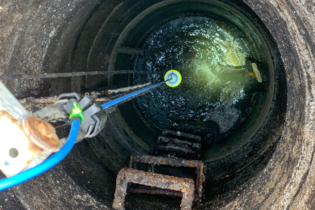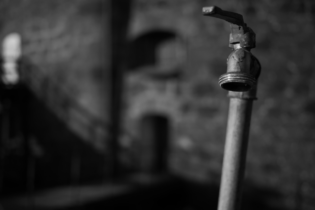The rising levels of the Kamfers Dam have been flooding a major railway line in the Northern Cape thus inhibiting its stability.The rising levels havealso begun flooding the Lesser Flamingos’ breeding island in the dam, causing a deterioration of the water quality.
Awater quality study, conducted by Dr Jan Roos from Water Quality Consultants in Bloemfontein, has found that Kamfers Dam’s water quality has deteriorated significantly. According to Roos, the Kamfers Dam aquatic system is under severe pressure because of a massive cyanobacterial (algal) bloom and extreme oscillations in oxygen concentrations driven by poor water quality. Not only is the water quality the worst it has ever been, the water is reported to be at its highest level. More than two-thirds of the Lesser Flamingos’breeding island remains flooded and two important railway lines are at risk. “This is a disaster,” explained Jahn Hohne, chairman of the Save the Flamingo Association. “Kimberley is about to lose one of its most important assets and tourist attractions and the massive displays of thousands of flamingos which greet visitors as they arrive in Kimberley may soon be gone forever.” Water quality According to Roos, the nitrogen, ammonium, fluoride and phosphates of the inflowing sewage water are exceptionally high and way above the allowable Department of Water Affairs’ standards. The non-compliance to treatment standards by the Homevale sewerage treatment works is still the biggest problem to ensure an acceptable water quality in Kamfers Dam. Kamfers Dam is a nutrient enriched system because of an excessive inflow of nutrients (sewage) and consequent high algal biomass. The Chemical Oxygen Demand (COD), for example, in the discharge water is very high (206 mg/ℓ) and above the maximum allowable limit of 75 mg/ℓ. The composition of algae is changing from mainly blue green algae, Spirulinaplatensis, which is the dominant food of the Lesser Flamingos, to Chlorella, one of the green algae – leaving room for concern that toxin-producing algae, such as Microcystis, may also soon be present in this polluted wetland. Of further concern is that faecal coliform bacteria in the outflow water were unacceptably high (>241 900 cfu/100 ml) and too numerous to count at the Institute for Ground Water Studies laboratory in Bloemfontein. The general limit for faecal coliform in sewage effluent is 1000 cfu/100 mℓ. These bacteria are often an indication of human pathogens in the water, so people who come into contact with the water could be in danger of being infected with several diseases. The E. coli concentrations were also too numerous to count.WWTW upgrade
The rising water level resulted in the flooding of the island and thousands of chicks drowned and eggs were lost. The Homevale WWTW has been fixed at a cost of R60 million hence water of a significantly improved quality will be flowing into Kamfers Dam. The pipeline, which will be used to pump excess treated water away from Kamfers Dam, is currently undergoing rehabilitation. The dam’s water level will therefore be maintained at an acceptable level, which means no flooding of the flamingo breeding island and surrounding railway lines. Project overview The rising main, pump station and gravity south and north pipelines was a combined effort of Sol Plaatjies Municipality and Transnet. The contractor, EntshaHenra Construction, was commissioned to carry out the installation, and it purchased the pipes from Fiberpipe. Fiberpipe supplied the physical pipes and fittings for all the phases as well as trained the contractors’ staff on the proper installation of the glass reinforced pipes (GRP). In addition, the company provided a monitoring service to ensure that installation procedures were correctly adhered to and provided technical assistance to the contractor. For the performance required from the pipeline, GRP was decided upon as the best material – complying with technical and design requirements – and was the rated the most economical. The installation of GRP is also much quicker. The cost of the pipes for this project was R35 million.






